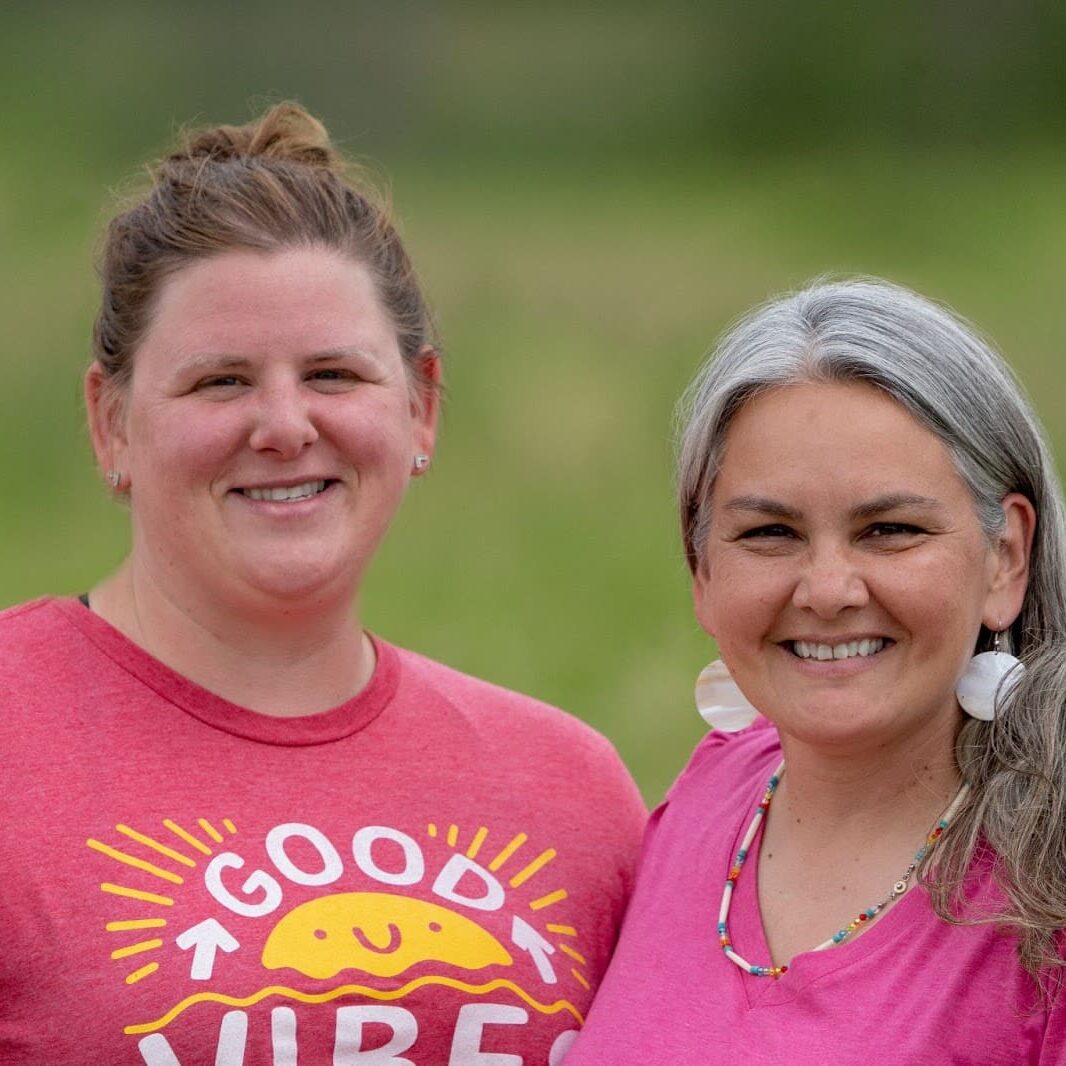By Amy Myszko
Language is one of the most precious assets of Indigenous cultures around the world. This is especially true here on Turtle Island, where targeted efforts of genocide including boarding schools and forced assimilation have left many Native languages floundering or outright lost. With so few first language speakers left alive, the commitment to save traditional languages is at the forefront of cultural preservation efforts. Language revitalization is one way that Native families and youth can reclaim pieces of cultural heritage robbed from many of their ancestors.
Here on White Earth, a handful of passionate teachers have come together with the support of the Niibi Center, a local non-profit organization, to train four Anishinaabe language teachers over the course of the year, who will then go out to teach children and families in the greater community. The ultimate goal of this language training program, which has been happening both in-person and over Zoom since November of 2021, is to help the White Earth Nation achieve the goal of starting a language immersion school in the future. The trainings are happening about one weekend a month and provide mentorship from 1st language speakers, as well as instruction from former immersion school teacher and White Earth band member Biidaabanikwe (Kim Anderson) and local language expert Naabek (Adrian Liberty).
The program was started by the Niibi Center, a White Earth based non-profit whose mission is to protect niibi (water), manoomin (wild rice) and Anishinaabe culture. With multiple programs ranging from Traditional Women’s Gatherings to working with Rights of Manoomin, as well as a program targeted at Healing Historical Trauma, the Niibi Center’s Executive Director Joseph LaGarde seeks to provide protection and healing for Anishinaabe people and for the Earth. The Niibi Center’s Language Revitalization Program is funded by a grant from the Blandin Foundation, an organization devoted to supporting rural Minnesota communities.
The students come from diverse backgrounds, but all have similar goals including having a home where Anishinaabemowin is the first (and in most cases only) language. Kayla Gordon, from the Redcliff reservation, reported having been exposed to the language since childhood, but wanting to increase her fluency. She speaks Anishinaabemowin at home with her eight-year-old son, whose first words were in Ojibwe. Gordon is also a teacher and hopes to continue helping expand language proficiency in the local community.
Other students came to the language later in life, like Giizhikenhs (Stephany Morgan), who always loved the language but had to pursue learning it through immersion programs after college. After many years with grueling commutes studying in immersion programs, she is happy to report that language immersion has become life and Ojibwe just “clicks.” One of Giizhikenhs’ future goal is to have an English-free home and raise her future children as first language speakers, as well as ultimately teaching on an online language immersion platform.
Megan Lhotka started learning Ojibwe on her own in 2014, although she grew up hearing basic phrases like “gaawiin” and “miigwech.” Lhotka has been involved in bringing language programs to the White Earth Headstart program as well as Ogema Elementary school. She shared that while she has experienced lateral violence within her own community, the language immersion community has become like family, a theme echoed by many of the trainees.
Aazhoo-bines (John Daniel), the project’s Linguistic Consultant, learned some Ojibwe in elementary school and basic grammar in public high school, as well as studying the language at Fon du Lac Community College. Aazhoo-bines also speaks only Ojibwe in his home with his children, aged 1, 5 and 7 and would like to see the language immersion trainings grow and expand to include collaboration with other tribes and reaching more people in the White Earth community. He is passionate and inspired to learn and teach Ojibwe and wants to share that energy with others.
Leading the trainings, Kim Anderson considers language learning a healing journey and a process that leads to a richer sense of identity for Indigenous people. In her opinion, these trainings are helping to build confidence as language speakers and as Anishinaabe people. Anderson believes that language connects people more deeply with their culture, particularly raising children in the language who can be seen as new language carriers for the future.
Naabek, the program’s other primary language trainer, wants to see Ojibwe flourish and become so prevalent that it simply becomes normal. He also points out the importance of protecting and perpetuating the language because as a culture, Anishinaabe people have important gifts to share with the world, and preserving what knowledge remains with Elders is incredibly important, so that these gifts can be shared out to the wider community.
The Niibi Center, in conjunction with their funding partners and the WEN, hope to continue supporting language immersion training programs into the foreseeable future. Language revitalization will undoubtedly continue to enrich the community and uplift local teachers who can offer immersion studies to children and families across White Earth and beyond. It is exciting to imagine what healing can occur through facilitating families in raising Anishinaabe first-language speakers and preserving the language and culture into the next generations.
Share:
